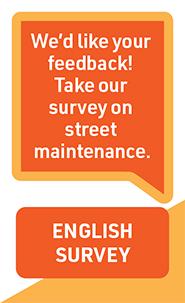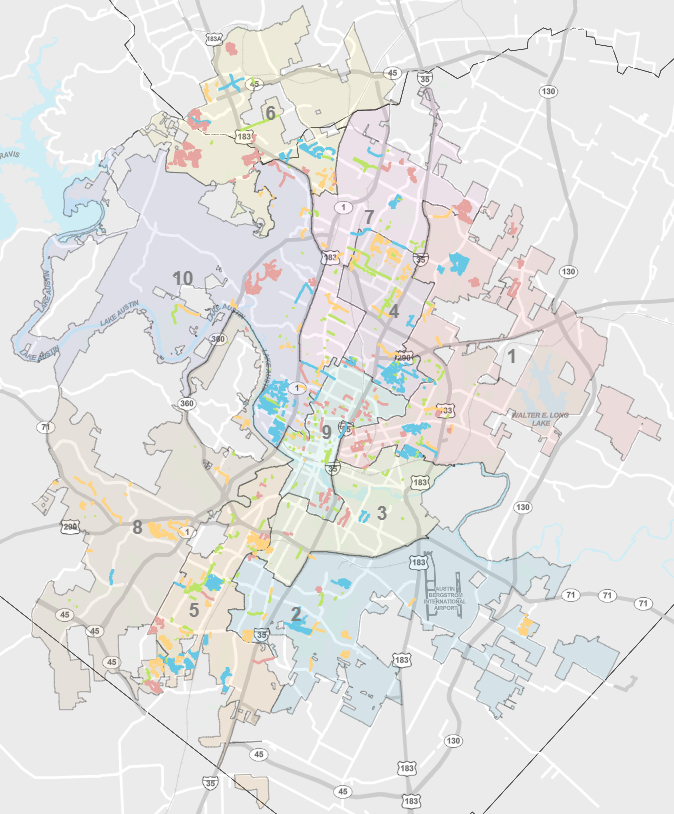Austin contains thousands of miles of streets, and Austin Public Works uses various strategies to improve and maintain City of Austin owned roadway surfaces. Scheduled preventative maintenance helps prolong the lifespan of these surfaces by protecting them from the effects of aging, cracking, deterioration, and water infiltration. Additionally, prolonging the life of our city streets saves time and taxpayer money by intervening before full reconstruction is needed.
What streets will be paved next?
Click the image below to use our interactive Street Maintenance map and read about our five main street treatment types. The map reflects our most current research and is updated on a yearly basis using a Pavement Management Information System (PMIS). The goal of our Street Preventative Maintenance Program is to maintain at least 80 percent of Austin’s streets in fair or better condition.
What street treatments do we apply?
Our five main treatment types include sealcoat, overlay, slurry seal, crack seal and fog seal. View our Street Maintenance map above for more information on these processes. The City of Austin uses a Pavement Information System (PMIS) to track pavement inventory and performance, which helps to assign appropriate treatment types at various locations.
What is sealcoat?
One of the more notable treatment types we use on streets is sealcoat. This is a cost-effective maintenance solution that is applied from April to October each year.
With sealcoat, crews spray an oil mixture on the road, followed by spreading and rolling a gravel mixture into place. Finally, they sweep up excess gravel, resulting in a smoother surface that eliminates the hairline cracks that lead to potholes.
Residents who live along streets identified for sealcoat treatment will receive a notice in advance of scheduled work. These residents will be asked to move vehicles away from streets scheduled for maintenance for two days.
Streets can be used immediately after treatment, which is typically done in 30 minutes. However, hard braking or turning over newly-sealcoated streets should be avoided, since this can cause an increased amount of small gravel particles to break loose from the road before the treatment cures. Crews will return for additional sweeping of loose gravel if needed. Residents can expect loose gravel to settle in roughly 4-6 weeks.
Sealcoat is not applied in cul-de-sacs due to sharp turning by vehicles in these areas. Instead, a slurry seal treatment may be applied in cul-de-sacs at a later time. Tire marks and surface imperfections may still be noticeable on a slurry seal after application, but in time the surface will cure and blend.
Report an Issue
To report a pothole or other street maintenance issue, call 3-1-1, visit the Austin 3-1-1 website or download the 3-1-1 app.
Related Links
Street Preventative Maintenance FAQ
Mill and Overlay Overview



